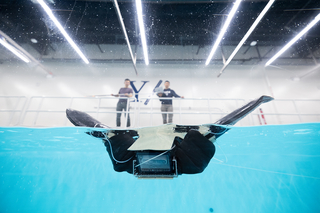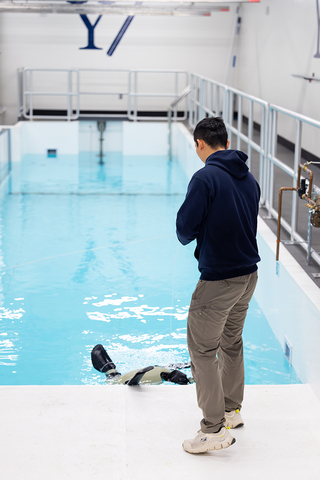The technology behind amphibious robotics, marine observation devices and other water-based innovations has progressed dramatically in recent years. Finding research facilities that can keep up with these advances, though, has proved tricky.
To that end, Yale University now has the Tech Tank, a specialized facility for testing such technologies under very specific and tightly controlled conditions. Housed in a former warehouse at Yale’s West Campus, the 20,000-gallon tank features a wave generator, a moveable mesh ramp, and climate control. It’s 40 feet long, 10 feet wide, and the water is six feet deep.
Although the tank is managed by the School of Engineering & Applied Science, it will be open to researchers in all fields, both at Yale and beyond. The tank is the latest development in the School’s commitment to robotics, an initiative that has doubled the number of faculty focusing on robotics at Yale Engineering.

